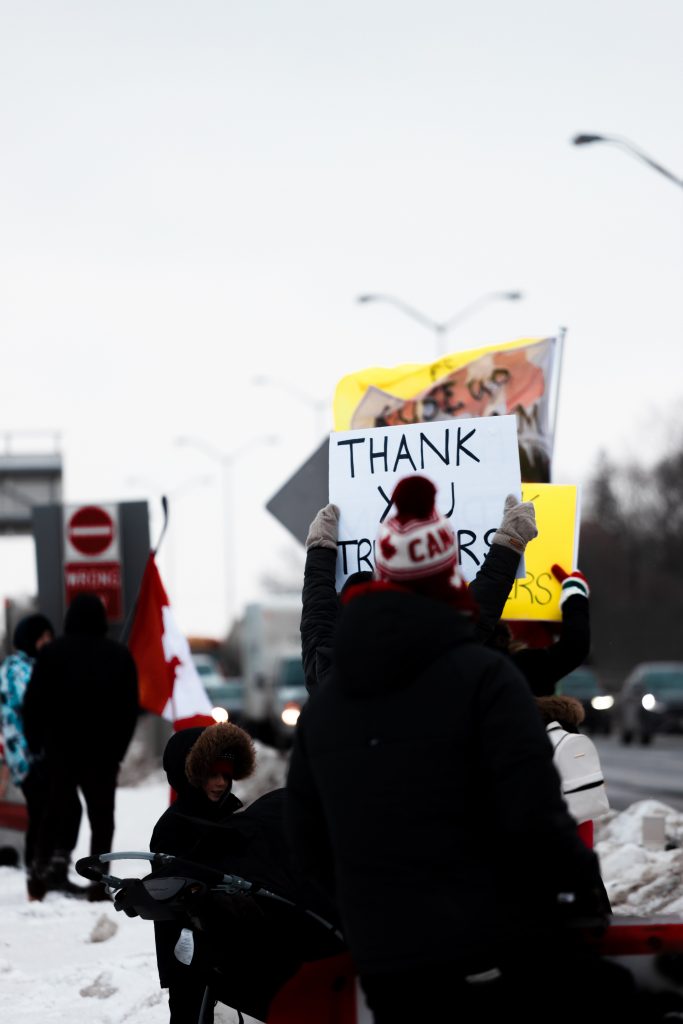Canada News
Anti-vax protest or insurrection? Making sense of the ‘freedom convoy’ protest

The so-called “freedom convoy” protests over the last month saw an unprecedented reaction by all levels of government and ultimately led to Prime Minister Justin Trudeau invoking the Emergencies Act. The act shut off funding to protesters, conscripted private tow trucks to haul away rigs (tilting the balance of resources) and provided additional policing resources.
While many see what happened in Ottawa as unique, it’s also similar in some ways to what’s occurred in the past. The convoy might be considered a social movement protest or a form of “contentious politics,” which covers protest and related phenomena, including insurrections.
Contentious politics seems a particularly apt description because the “freedom” protest has as much to do with opposing Trudeau’s Liberal government as it does with opposing vaccine mandates — which provided a “political opportunity” for the protest.
Messaging vs. disruption
One motivation for protests is to capture the media’s attention and communicate to the public. Other types of tactics, like blockades, are intended to cause disruption to put pressure on governments and other parties to act. In Canada, protesting to get a message across is a democratic right.
Views about the legitimacy of disruption are mixed. Over the last few years, Vancouver protesters opposed to the TransMountain Pipeline and those against logging in Fairy Creek on Vancouver Island engaged in both types of tactics. But those disruptive tactics were mostly narrowly targeted against the companies involved in building the pipeline and on the site of the logging operations.
By contrast, the truckers’ protest cast a much wider net — it disrupted the entire city of Ottawa. Public opinion on these various issues and disruptions consequently vary.
Not the first city shutdown
As York University sociologist Lesley Wood has pointed out, trucker border blockades have occurred before. It’s also not the first time a city has been shut down due to mass protest — this occurred during anti-globalization protests, including in Seattle in 1999 and Toronto in 2010. Nevertheless, the use of big trucks to disrupt normal city life is new, and constitutes what academics call a “tactical innovation.”
Protest size is often seen as an indicator of its legitimacy and potential to influence outcomes. Observers have been impressed with the size of the truckers’ protest. This was shaped by the length of the convoy of trucks, which does not necessarily translate into large crowds of individuals.
The protest was actually not nearly as large as some other events in Canada. Police estimated that protest crowds in Ottawa were between 5,000 and 18,000. This crowd was dwarfed by climate marches in Montréal (approximately 500,000) and Vancouver (estimated at 120,000) in September 2019.
Different treatment for other protesters
Some wonder why police in Ottawa took so long to take action against the protesters and asked why other protests and groups seem to get treated differently by police.
Indigenous groups are often subject to more more military-style policing than other protesters, and it should be noted one of the only few times in the past 100 years that the military has been used to suppress a protest was against the Mohawks during the Oka crisis in 1990. By contrast, videos circulated in the media showed RCMP officers hugging and shaking hands with protesters at the border in Alberta.
Researchers have found that police use discretion in how they repress protesters. In Canada, it’s customary to give protesters time and space initially to fulfil their right to protest and deliver a message. Police are more likely to take action after court injunctions are issued and if there are threats of violence or property damage (as witnessed at the border protest at Coutts, Alta).
In Ottawa, most of the protest leaders were arrested, as were about 170 of their followers. Within two days of enhanced police action, the protesters dispersed and dozens of their trucks were towed and impounded.
What’s next for anti-vax protests?
The “freedom convoy” in Ottawa may be over, but it is impossible to be certain about the future of anti-vaccine mandate movements.
According to polls and to patterns of vaccination across the country, the vast majority of Canadians do not support the truckers’ protest or their positions, and two-thirds of Canadian support the use of the Emergencies Act.
This means the federal government has limited pressure on it to make concessions. It’s likely many COVID-19 measures will soon be reduced anyway in response to falling hospitalization rates — several provinces have already made such announcements. It seems likely that the truckers will declare victory and claim the changes were made as a result of their protest.
The contentious politics on display in the truckers’ protest are intertwined with a shift toward more extreme political views among some segments of the population, a trend that’s spread from south of the border. Because the size of this faction of extremists isn’t as large as in the U.S., the political dynamics in Canada are different.
The protest has already played a role in costing both the federal Opposition leader and the Ottawa chief of police their jobs, and there will likely be further political and social repercussions in the coming weeks and months.
One potential outcome — ironic, considering many on the left were critical of the government’s hesitancy to crack down on the truckers’ protest — is that future right-wing governments may be more likely to use the Emergencies Act to crack down on progressive protesters like those involved in climate and anti-colonialism protests.
David Tindall, Professor of Sociology, University of British Columbia
This article is republished from The Conversation under a Creative Commons license. Read the original article.





















